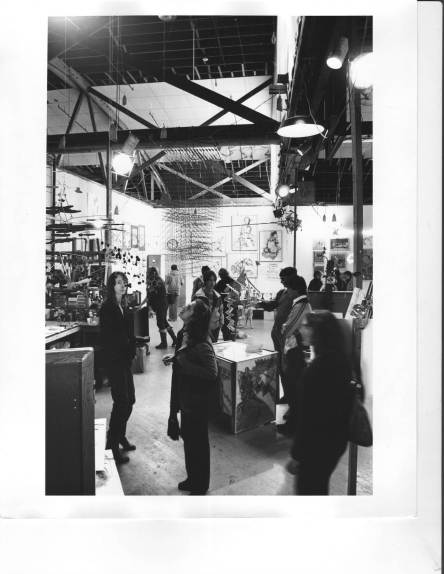Marinship’s Artistic Legacy
 Tuesday, September 9, 2014 at 02:45PM
Tuesday, September 9, 2014 at 02:45PM By Larry Clinton
Sausalito’s wartime shipyard, Marinship, sprang up almost overnight in 1942. Then, after WWII, it disappeared just as suddenly. The waterfront acreage, littered with abandoned landing craft, lifeboats and other surplus materiel, was to become the center of Sausalito’s waterfront artistic community.
In his book Sausalito: Moments in Time, Jack Tracy wrote:
“With the end of World War II and the closing of Marinship, Sausalitans turned their attention from the waterfront and concentrated on a return to normal, if such a return were possible. Sausalito’s population quickly dropped to almost its prewar level of 3,500. The streets and shops seemed deserted when compared to wartime hustle and bustle. As in the rest of the country, shortages of manufactured goods and food rationing still existed, and unemployment was a major cause of concern. . . The U.S. Army Corps of Engineers needed only a portion of the sprawling facility for their operations, about forty-five acres including the administration building, the warehouse, outfitting docks, and ferry slip… Marinship was sold off piecemeal by sealed bid auctions… Several small businesses did soon open on the site.”
Donlon Arques, who had worked on contract at Marinship, later acquired surplus ships, shipyard land, and equipment, and began renting watercraft to artists and returning WWII veterans, many of whom were going to college on the GI Bill and needed low cost housing. Ultimately, Arques controlled much of the postwar Marinship property along the Sausalito waterfront.
As Phil Frank wrote in the Historical Society book Houseboats of Sausalito, “The Arques boatyards became havens for sculptors, painters, jewelry makers, and bon vivants in the late 1940s and 1950s. The beats of San Francisco’s North Beach came to consider Sausalito their summer home…”
A couple of large Marinship buildings went through dramatic changes in peacetime. The Mold Loft and Yard Office, one of the largest buildings at Marinship, contained a giant open space for laying out templates on plywood. These templates were then slid down a ramp and taken to the plate shop where they were used over and over to mark the steel sheets that would become parts of the ships. Postwar, the structure was renamed the Industrial Center Building and began leasing commercial space. Abstract impressionist Walter Kuhlman was the first artist to move in, in 1955, followed by many others, including Tim Rose, who became famous for his mobile sculptures. Today the ICB, at Harbor Drive and Gate 5 Road, houses dozens of artists and artisans, and hosts open studio events twice a year.
The even larger Marinship warehouse covered 122,500 sq. ft. Railroad tracks ran along its dock area, bringing everything a ship would need, except plate steel and machinery. Today it houses the Bay Model, and the surrounding property is the site of the Sausalito Art Festival, held annually over the Labor Day Weekend.
Other shipyard buildings became work spaces for many of the boatbuilders and maritime trades drawn to the area because of their proximity to harbors, suppliers, and affordable housing. That tradition continues today, on a somewhat smaller scale.
I will be giving an illustrated talk on Marinship at the Sausalito Library, Friday September 19 at 7 PM. And the Floating Homes community, which emerged from the remains of Marinship, will be honoring its artistic heritage during its annual Open Homes Tour Sept. 20. For advance tickets, go to www.floatinghomes.org.
Tim Rose’s ICB studio in the ‘60s.
Photo courtesy of Sausalito Historical Society

Reader Comments